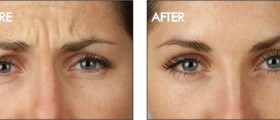What is a Chemical Peel?

A chemical peel uses a chemical solution to sooth the texture of your skin by removing the damaged outer layers. Although chemical peels are used mostly on the face, they can be used to improve the skin on your hands and neck as well. A peel is one of the least invasive ways to improve the appearance of your skin. Sun exposure, acne, or aging can leave your skin tone uneven, wrinkled, spotted or scarred.
A chemical peel can help improve acne and acne scars, age or liver spots, fine lines and wrinkles, freckles, irregular skin pigmentation, rough skin and scaly patches, scars and sun damaged skin.
A chemical peel will not treat deep facial lines, tighten loose or sagging skin, remove broken capillaries, change pore size, or remove deep scars.
Chemical peel candidates:
You may not be a good candidate if you have a history of abnormal skin scarring, abnormal pigmentation, Afro-Caribbean or Asian skin, facial warts, red hair, pale, freckled skin, or have used certain acne treatments within the last year. Please call for a consultation to see if you are a good candidate.
Chemical peel risks and safety information:
You should understand that all chemical peels carry some risks and uncertainties. A chemical peel is usually a very safe procedure, but though infrequent, you could develop an infection or scarring from chemical peels. If you have suffered from cold sores (herpes) in the past, there is a risk of reactivation. Please tell us if you have a history of keloids (scar tissue overgrowth) or any unusual scarring tendencies.
Light chemical peel:
A light chemical peel might be the right choice if you have uneven pigment, dryness, acne, or fine wrinkling. This kind of peel removes just the outer layer of skin (epidermis) in a light exfoliation and results in a healthier glow. We use a combination of alpha hydroxyl acids and beta hydroxyl acids such as glycolic acid, lactic acid, salicylic acid and maleic acid. All of these chemicals are the mildest choices and come in a variety of potential strengths. You can repeat these treatments to achieve your desired results.
Risks and recovery from a light chemical peel:
You are likely to experience some redness, stinging, skin flaking and irritation from a light chemical peel. After repeated treatments, these side effects will likely subside. Other risks include hyperpigmentation (when too much pigment occurs, causing brown blotches). This can be avoided by always wearing a high-factor sunscreen.
Medium chemical peel:
Acne scars, deeper wrinkles and uneven skin color can all be treated with a medium chemical peel. The chemicals used for this type of peel will remove skin cells from both the outer layer of skin (epidermis) and upper part of the middle layer of skin (dermis). Our preference for this more aggressive peel is called the VIPeel. The unique blend of ingredients in the VIPeel produces powerful results with no pain, no skin preparation and very little down time. VIPeel is a combination of several of the most effective anti-aging medical peel agents available, which include:
TCA – Trichloroacetic Acid, which stimulates collagen growth and penetrates for deep scar healing.
Retin-A – acid derived from vitamin A to combat wrinkles.
Salacylic Acid – this beta hydroxyl acid is an exfoliant.
Phenol – has antiseptic and anesthetic properties and aids in skin penetration.
Vitamin C – an ascorbic acid has anti-oxidant and mild exfoliation properties.
The VIPeel can be used for treating hyperpigmentation and melasma, reverses sun damage and signs of aging, improves skin tone and texture, clears acne and reduces acne scars. For younger looking skin, it stimulates collagen growth and elastin production. It reduces the appearance of pores and treats all skin types. It is the only peel approved for treatment of the area under the eye, and it improves acne in patients as young as 13 years of age.
Risks and Recovery from a VIPeel:
You are likely to experience some redness, stinging, skin flaking and irritation. Other risks include hyperpigmentation (when too much pigment occurs, causing brown blotches). This can be avoided by always wearing a high-factor sunscreen. You should not work out or sweat excessively for the first three days after the procddure, and you should not pick or pull your peeling skin. The normal down time from this procedure is 3 or 4 days, with maximum redness occurring on days 2 and 3.
What are Microdermabrasion Treatments?
Microdermabrasion helps to thicken your collagen, which results in a younger looking complexion. Collagen is a protein in your skin that supports the weight of your skin. It was abundant when you were a child and is responsible for the appearance of smooth and taut skin. Collagen production declines as we age, resulting in loosening and uneven skin.
Microdermabrasion treatments use a minimally abrasive instrument to gently sand your skin, removing the thicker, uneven outer layer. It is often used before a light or medium peel to prepare the skin for a peel and results in even better outcomes. It also improves age spots and blackheads, exfoliates the skin, which results in a refreshed appearance. It lessens the appearance of stretch marks and reduces fine lines and wrinkles. It reduces or eliminates enlarged pores and treats acne and the scars left by acne. It also improves hyperpigmentation (patches of darkened skin).
Microdermabrasion recovery:
There is no down time or recovery following microdermabrasion. After your treatments, your provider may recommend a special moisturizer or facial product to enhance and prolong your result.













